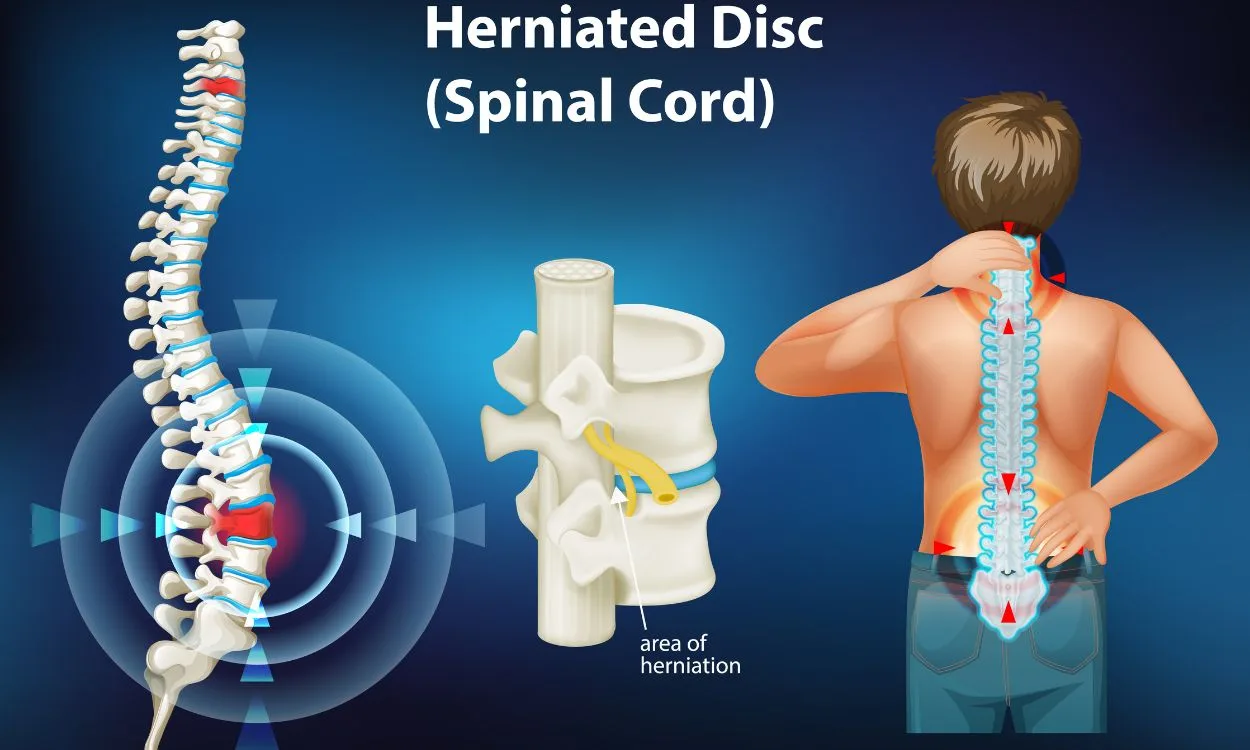Can spinal disc problems lead to back pain?
Back pain is a common health issue that affects many people, and one of the potential causes of back pain is spinal disc problems. The spine is made up of a series of bones called vertebrae, and between each pair of vertebrae is a cushion-like structure called an intervertebral disc. These discs act as shock absorbers and help facilitate movement in the spine. However, when these discs are damaged or degenerate, they can lead to back pain. In this article, we will explore the relationship between spinal disc problems and back pain, as well as discuss potential treatment options.
Understanding Spinal Disc Problems
Spinal disc problems can occur as a result of various factors, including age-related degeneration, injury, and poor posture. The two most common types of spinal disc problems are herniated discs and degenerative disc disease.
- Herniated discs: Also known as a slipped or ruptured disc, a herniated disc occurs when the soft inner core of the disc pushes through the outer layer and puts pressure on nearby nerves. This can cause pain, numbness, and weakness in the back and legs.
- Digenerative disc disease: This condition is characterized by the gradual deterioration of the intervertebral discs. As the discs lose their cushioning ability, the vertebrae may start to rub against each other, leading to pain and stiffness. Degenerative disc disease is often associated with aging and wear and tear on the spine.
The Connection between Spinal Disc Problems and Back Pain
Spinal disc problems can be a significant source of back pain. When a disc herniates or degenerates, it can put pressure on the surrounding nerves, causing inflammation and irritation. This can result in localized pain in the back, as well as radiating pain that travels to other areas, such as the buttocks, thighs, and legs. The intensity and location of the pain can vary depending on the location and severity of the disc problem.
In addition to pain, spinal disc problems can also cause other symptoms, including:
- Numbness or tingling sensations in the affected area
- Muscle weakness in the legs or feet
- Limited range of motion in the spine
- Pain that worsens with certain movements or positions
- Difficulty walking or performing daily activities
Treatment Options for Spinal Disc Problems
The treatment for spinal disc problems aims to alleviate pain, reduce inflammation, and promote healing of the affected discs. The specific treatment approach will depend on the severity and nature of the disc problem. Some common treatment options include:
- Conservative treatments:
- Physical therapy: Exercise and stretching routines can help strengthen the muscles supporting the spine and improve flexibility.
- Pain medications: Over-the-counter or prescription medications can help manage pain and reduce inflammation.
- Heat or cold therapy: Applying heat or cold packs to the affected area can help alleviate pain and reduce swelling.
- Rest and modified activity: Taking a break from activities that worsen the pain and adopting proper body mechanics can promote healing.
- Interventional procedures:
- Epidural steroid injections: These injections deliver anti-inflammatory medications directly into the affected area to alleviate pain and reduce inflammation.
- Spinal manipulation: Chiropractors or physical therapists may perform manual adjustments to the spine to relieve pressure on the affected discs.
- Surgical interventions:
- In severe cases where conservative treatments are ineffective, surgery may be necessary. Surgical options include discectomy (removal of the herniated portion of the disc) or spinal fusion (fusing two or more vertebrae together to stabilize the spine).
It’s important to note that treatment plans should be individualized based on the patient’s specific needs and guided by healthcare professionals.
Fitpaa: Your Partner in Achieving a Healthy Spine
While spinal disc problems can be a challenging condition to manage, leading a healthy lifestyle and following a comprehensive treatment plan can significantly improve outcomes. This is where Fitpaa can assist you on your journey to a healthy spine.
Fitpaa’s AI-driven Metabolism Monitoring and Management technology can help optimize your overall health, including your spine health. By taking the Fitpaa Metabolism Assessment, you can identify any underlying metabolic imbalances that may contribute to your spinal disc problems. Fitpaa’s expert team of fitness coaches, nutritionists, and doctors can then create a personalized Fitpaa Capsule based on your specific needs, helping you achieve your health and fitness goals.
The Fitpaa Capsule combines medical therapy, exercise therapy, nutrition therapy, and cognitive behavioral therapy to optimize your metabolism and strengthen your body, including your spine. The Fitpaa app provides real-time guidance, habit-building techniques, and tracking tools to keep you motivated and on track towards a healthy spine.
Don’t let spinal disc problems limit your quality of life. Download the Fitpaa app today and join our community of individuals committed to achieving a healthy spine and overall well-being. Your journey to a pain-free life starts now!
Request a Trial and let Fitpaa guide you towards a healthier, pain-free life.
Note: Fitpaa is a comprehensive health and fitness platform that offers personalized solutions for various health conditions, including spinal disc problems. While Fitpaa can provide valuable support and guidance, it’s essential to consult with healthcare professionals for an accurate diagnosis and appropriate medical advice.









